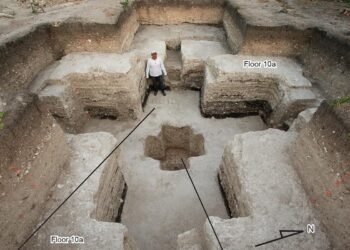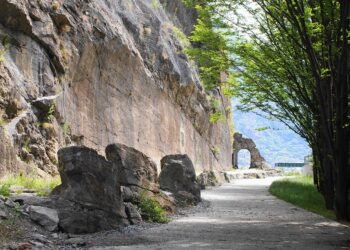Archaeologists from the Norwegian Institute for Cultural Heritage Research (NIKU) are embarking on an innovative exploration of a Viking Age site in Norway’s Sandefjord municipality, utilizing a groundbreaking Ground Penetrating Radar (GPR) robot developed by a collaboration between AutoAgri, Guideline Geo/MÅLÅ, and NIKU.

This autonomous robot, equipped with the latest high-resolution, multi-channel GPR system, is revolutionizing archaeological surveys by providing non-intrusive, real-time imaging of subsurface features.
The GPR technology employs radar pulses to create subsurface images, allowing for non-intrusive surveying of archaeological features and patterns beneath the ground. Unlike previous methods that required manual operation, this autonomous GPR robot streamlines the process, significantly enhancing efficiency. Erich Nau, project manager at NIKU, noted that it only needs a brief hour to map the driving route before autonomously conducting the survey.
Knut Paasche, head of NIKU’s Digital Archeology department, highlights the importance of integrating autonomous vehicles with advanced GPR systems to improve archaeological surveying. This integration, supported by specially developed software, promises more efficient data collection and analysis.
The initial testing of the GPR robot was conducted in Stjørdal municipality, demonstrating increased efficiency and providing accurate mapping solutions. Now, the robot is being deployed to study a Viking Age trading post at Heimdalsjordet near the Gokstadhaugen ship burial in Sandefjord. This non-intrusive approach aims to reveal detailed subsurface features such as longhouses, land plots, roads, wharves, and burials that previous surveys might have missed.
The project aligns with broader efforts to explore Norway’s history, particularly the Late Iron Age and the Viking Age. The survey, part of the “Farmers on Land, Vikings at Sea” project, seeks to understand the societal upheavals and cultural transformations during this period. By uncovering hidden archaeological structures and artifacts, researchers hope to shed light on the formation of the state, religious changes, and other historical developments leading up to significant events like the battle at Stiklestad in 1030.
The use of the autonomous GPR robot not only improves archaeological surveying but also promotes environmental sustainability. The fully electric robot reduces carbon emissions and noise pollution compared to traditional diesel-powered vehicles. Paasche emphasizes the dual benefits of climate-friendly solutions that protect both the environment and hidden cultural monuments underground.























